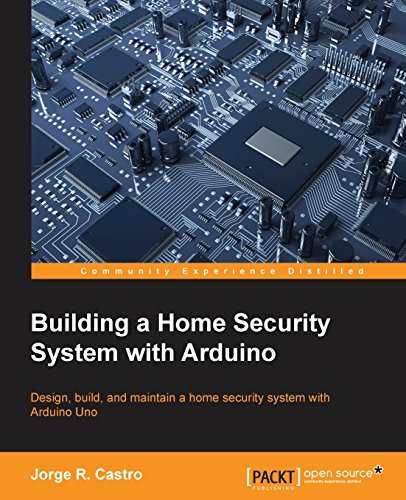

Most ebook files are in PDF format, so you can easily read them using various software such as Foxit Reader or directly on the Google Chrome browser.
Some ebook files are released by publishers in other formats such as .awz, .mobi, .epub, .fb2, etc. You may need to install specific software to read these formats on mobile/PC, such as Calibre.
Please read the tutorial at this link: https://ebookbell.com/faq
We offer FREE conversion to the popular formats you request; however, this may take some time. Therefore, right after payment, please email us, and we will try to provide the service as quickly as possible.
For some exceptional file formats or broken links (if any), please refrain from opening any disputes. Instead, email us first, and we will try to assist within a maximum of 6 hours.
EbookBell Team

0.0
0 reviewsDesign, build and maintain a home security system with Arduino Uno
About This BookThis book is for novice programmers and hobbyists who want to understand how Arduino can be used to program a home security system as well as to those who want to delve deeper into the world of Arduino.
What You Will LearnArduino is an open source micro-controller built on a single circuit board that is capable of receiving sensory input from the environment and controlling interactive physical objects. It is also a development environment that allows the writing of software to the board, and is programmed in the Arduino programming language. It is used for a variety of different purposes and projects, from simple projects such as building a thermostat, to more advanced ones such as robotics, web servers, seismographs, home security systems and synthesizers.
This book will demonstrate how the Arduino can be used to develop a highly connected home security system by mobilizing a network of sensors which can feed alerts back to an Arduino when alarms are triggered. You will know the current state of security systems, well supported by the designs that fit best for your environment. Also, we will see some current technologies such as NFC, Wi-Fi and Bluetooth, and will finally create a complete web interface that will allow us to remotely manage our system, and even send daily bulletins with the summary of activity.
Towards the end, we'll develop a wireless home security system by setting up security cameras and motion detectors (door and gate trips, temperature sensors). We will then set up a centralized remote access hub (powered by the Arduino) that allows sensors to connect to the wireless home network that can be viewed and interacted by the user.
Style and approachA step-by-step guide with numerous examples focusing on providing the practical skills required to build home security applications using Arduino.